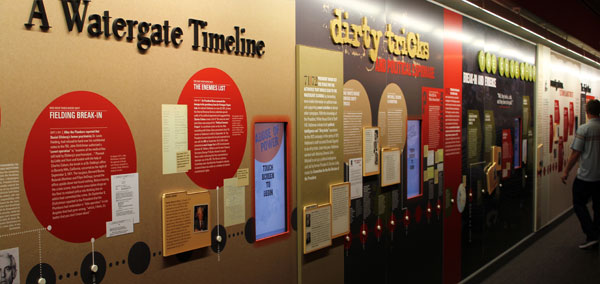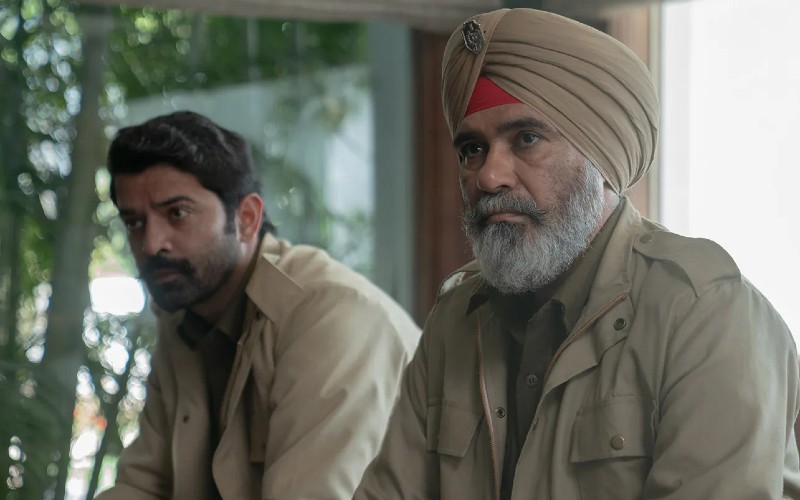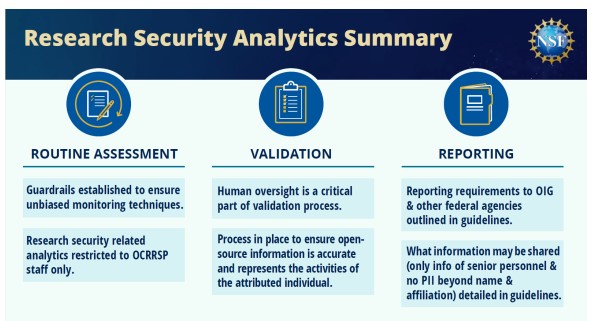Through the Prism of the Past: Watergate Memories at the Nixon Library
 Amidst all the turmoil currently swirling in Washington, D.C., a recent visit to the Richard Nixon Presidential Library and Museum in Yorba Linda, California gave a historical perspective to the alleged presidential misdoings of the current chief executive and his colleagues. I am drafting this on the 45th anniversary of the break-in at the Watergate that led to the disclosure of other misdeeds and the unraveling of the Nixon administration.
Amidst all the turmoil currently swirling in Washington, D.C., a recent visit to the Richard Nixon Presidential Library and Museum in Yorba Linda, California gave a historical perspective to the alleged presidential misdoings of the current chief executive and his colleagues. I am drafting this on the 45th anniversary of the break-in at the Watergate that led to the disclosure of other misdeeds and the unraveling of the Nixon administration.
All presidential libraries and museums are places where former chief executives and their supporters who contribute to the building of these facilities usually provide hagiographic portraits of the presidents and the great deeds of their lives and administrations.
The Nixon facility does this to a point. Close to the end of the museum we get an admonition from then-President Bill Clinton’s April 1994 eulogy for the 37th president asking us “to remember President Nixon’s life in totality” and “may the day of judging President Nixon on anything less than his entire life and career come to a close.”
The presentation to the public includes Nixon’s humble beginnings, his political ascension from House to Senate to Eisenhower’s vice presidency. We see his defeats in the 1960 presidential election and the 1962 California gubernatorial election, which includes the famous “last press conference,” where Nixon gloats about the press not having him “to kick around anymore.” There are also depictions of his remarkable political comeback to the presidency in 1968 and the 1972 re-election by a historically large margin.
His major foreign policy achievements with Russia, China, the Middle East, as well as ending the U.S. role in Vietnam, are proudly displayed. He is given credit for significant domestic accomplishments including the establishment of the Environmental Protection Agency, the Occupational and Safety Administration, the Consumer Product Safety Commission, and the implementation of Title IX, which has enhanced women’s equality. Ending desegregation in southern schools, encouraging minority entrepreneurship, and signing the Alaska Native Claims Settlement Act are also part of the legacy, according to the museum. All of these domestic policies have led to the claim that Nixon was our last liberal president until Obama.
And then you enter a room with a sign that notes the exhibits you are about to see and hear were provided by the National Archives and Records Administration, not the Richard M. Nixon Foundation. You have reached Watergate.
From our partner Pacific Standard: The battle over the Nixon library.
This was my second visit to the Nixon library. I was there in August 1990 about a month after it had first opened to the public. My most indelible memory from that visit was a room with a television playing a continuous loop of Nixon’s speeches. When I walked into the room I heard his eulogy for Ohio State football coach Woody Hayes. As a Ph.D. graduate of OSU, who was there during Woody’s tenure, I found this highly amusing.
The Watergate display in 1990 tried hard to exculpate the president. You were able to listen to the June 23, 1972 “smoking gun” tape, but with a voice-over explanation that this wasn’t definitive of the president’s guilt in the cover-up.
In 2007, the Nixon library became part of the presidential library system run by National Archives and Records Administration and the tapes and vast amounts of other material became available for researchers as they are in the other presidential libraries.
After a recent major renovation, the Watergate exhibit now includes excerpts from some of the 131 oral histories former library director Timothy Naftali conducted in 2007 and 2008 with significant figures in Nixon’s administration and the major players in the Watergate drama. Thus, we have William Ruckelshaus, then deputy attorney general explaining why he would not fire Special Prosecutor Archibald Cox. Ruckelshaus opines that Nixon wanted to fire Cox because “he was getting too close, not because he was misbehaving” and this was an abuse of presidential power. Robert Bork, then the solicitor general, tells us that he agreed with Ruckelshaus and Attorney General Elliott Richardson that Cox could not be fired “for cause” under the terms of his appointment. But Bork, speaking in 2007, says he did it anyway because Cox had “faced down the president on national TV” and that with Nixon in the midst of delicate Middle East negotiations (the Yom Kippur War had just occurred), this was an affront that deserved dismissal.
Other interviews include: Bob Woodward and Carl Bernstein describing their dogged pursuit of witnesses; John Sirica’s law clerk and counsels to the Senate Special Watergate Committee and the House impeachment Committee discussing the roles of their bosses. Nixon adviser Leonard Garment speaks sorrowfully about the President’s actions and the atmosphere he created that led to some of the more egregious activities. The Watergate cast of Bob Haldeman, John Ehrlichman, John Mitchell, John Dean, Jeb Magruder, Egil ‘Bud’ Krogh, Charles Colson, Gordon Liddy, and E. Howard Hunt are all represented on excerpts from the tapes, in later oral interviews, or in their written recollections. Of course, Nixon is also heard from including part of the interviews with David Frost that became the basis of a play and movie. If you want to listen for yourself, click here.
As we learned from all the investigations, Watergate encompassed not just what Nixon’s Press Secretary Ron Ziegler called “a third-rate burglary,” but what were later referred to by former attorney general and head of the Committee to Re-elect the President, John Mitchell, as the “White House horrors.”
A partial list included: breaking into Daniel Ellsberg’s psychiatrist’s office; Mitchell’s approving the break-in at the Watergate; proposing to firebomb the Brookings Institution and seizing politically damaging documents the president wanted destroyed; trying to use the CIA to block the investigation of the burglary; FBI Director L. Patrick Gray destroying evidence; creating the White House ‘plumbers’ to plug leaks through illegal wiretaps; composing a White House enemies list; using the IRS to audit opponents’ tax returns (not unique to Nixon); and discussing hush money and possible clemency for the break-in defendants.
Although we now know that Nixon was not the first president to tape in the White House (and the museum’s exhibit makes this clear), once their existence was revealed in July 1973, the special prosecutor requested that Nixon turn them over. This led eventually to the Supreme Court decision in late July 1974 that limits certain claims of executive privilege and forced Nixon to surrender the tapes. Following the ruling, the House Judiciary Committee voted articles of impeachment against the president. When the tapes were finally released, we all heard the June 23rd tape that implicates the president in the cover-up. Two weeks later Nixon resigned the presidency.
In his interview with Naftali, Carl Bernstein summed up the Watergate experience by saying that what saved the Republic was that “the system worked.” According to the Washington Post reporter who helped uncover the scandal: the press did its job; a great judge, John Sirica, did his job; and a great senator, North Carolina Democrat Sam Ervin, who believed in the Constitution above all else, did his job. In addition, the Republicans on the Senate Special Watergate Committee, did their job; key Republicans voted for impeachment in the House; and Arizona Republican Senator Barry Goldwater and the Republican congressional leadership went to the White House and told Nixon to resign or face conviction in the Senate.
Finally, according to Bernstein, the Supreme Court — with Nixon appointee Warren Burger as chief justice — voted unanimously that the president was not above the law. “A true triumph of the system” and its institutions, Bernstein concluded.
What does all this mean for the current situation? The Senate and House Intelligence Committees are investigating Russian interference in the 2016 election with possible collusion by representatives of the Trump campaign. The Senate activity appears much more serious. An FBI director who may have been getting “too close,” has been fired. The Justice Department has appointed a special prosecutor, who is a former FBI director, examining possible criminal behavior by presidential associates and perhaps, the president himself. The attorney general has recused himself from the Russia investigation, but refuses to answer congressional questions based on some vague notion of executive privilege.
Will the system work this time? An initial attempt to investigate Watergate by Texas Democrat Representative Wright Patman before the 1972 election floundered under pressure from the White House and the House Republican leadership, i.e. Gerald Ford. The current investigation by the House Intelligence Committee was initially compromised by its chairman, California Republican Devin Nunes, who appeared to be colluding with the White House.
During Watergate, almost 26 months elapsed from the June 17th break-in and the first story about it in the Washington Post until the president’s resignation. It took 15 months from the first Senate Watergate hearing until the president’s resignation. It was 25 months from the break-in to the voting of articles of impeachment by the House Judiciary Committee. A little over a year elapsed from the revelation of the Nixon taping system to the Supreme Court decision that the president must turn over the tapes to the special prosecutor (Texas lawyer Leon Jaworski had replaced Cox). The system worked, but it took time and the tapes gave us the proof that caught the president. Stay tuned!































































































